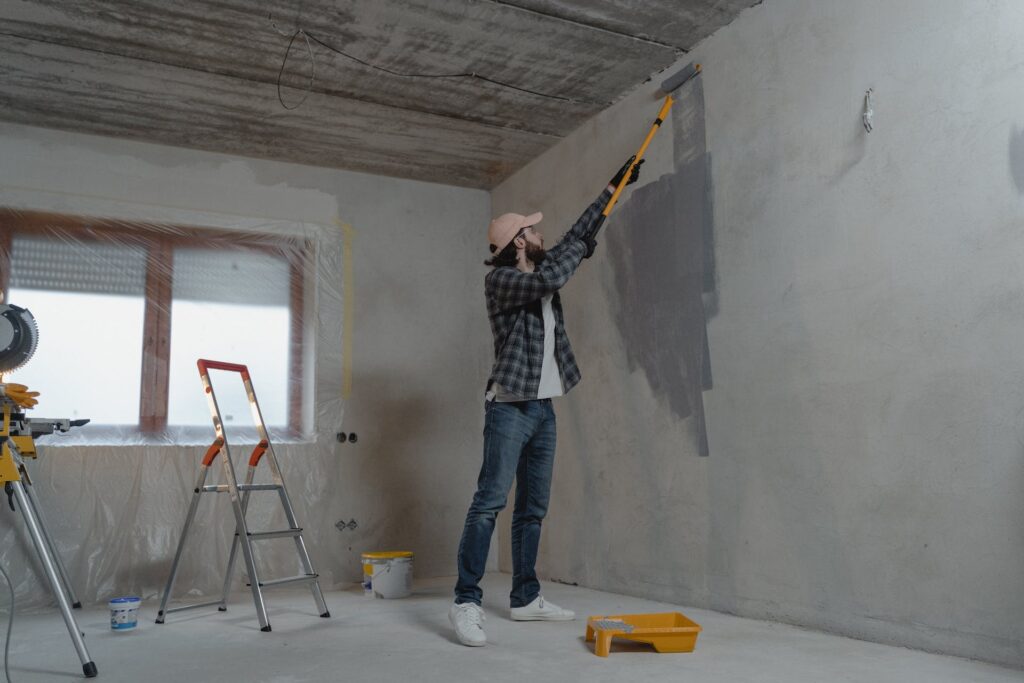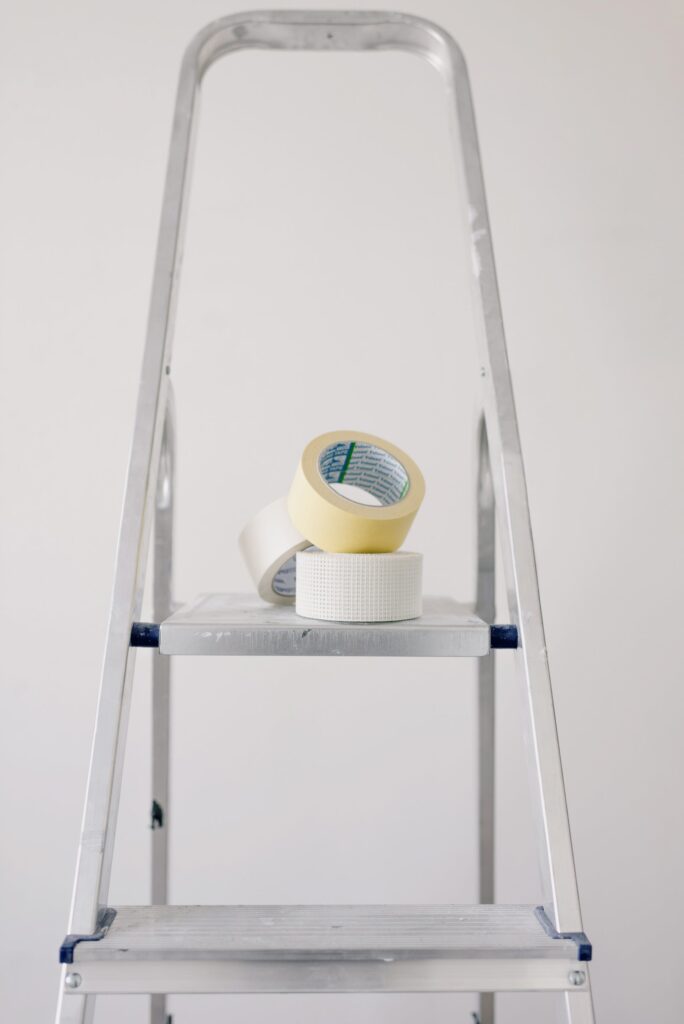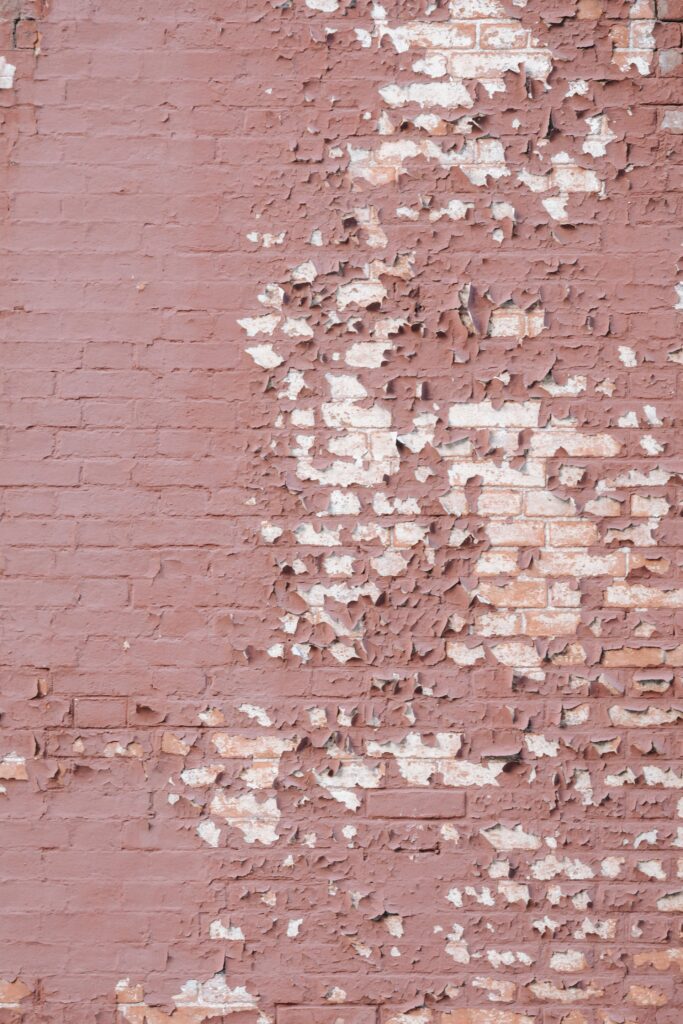Painting concrete is a great way to enhance the look and durability of your surfaces, whether it’s your driveway, patio, or basement floor. By adding a fresh coat of paint, you can give your concrete a new lease on life and transform the space. In this blog post, we will explore the benefits of painting concrete, as well as the preparation and tools needed for a successful project.

Contents
- 1 Benefits of Painting Concrete
- 2 Preparation and Tools Needed for Painting Concrete
- 3 Cleaning and Preparing the Concrete Surface
- 4 Repairing and Patching the Concrete
- 5 Priming the Concrete Surface
- 6 Choosing the Right Paint for Concrete
- 7 Application Techniques for Painting Concrete
- 8 Tips for a Successful Concrete Paint Job
- 9 Sealing and Protecting the Painted Concrete
- 10 Conclusion
Benefits of Painting Concrete
- Enhanced Appearance: Painting concrete allows you to customize the look of your surfaces, adding color and style to match your aesthetic preferences.
- Protection: A coat of paint acts as a protective barrier against stains, oil, water damage, and other environmental elements.
- Increased Durability: Paint can help seal cracks and prevent further damage to your concrete, extending its lifespan.
Preparation and Tools Needed for Painting Concrete
Before starting your painting project, it’s essential to prepare the surface properly. Here’s what you’ll need:
- Cleaning Supplies: Start by thoroughly cleaning the concrete surface using a pressure washer or a stiff brush and a concrete cleaner.
- Repair Materials: Fill in any cracks or holes using a concrete patching compound and allow it to dry completely.
- Primer: Apply a concrete primer to ensure proper adhesion of the paint.
- Paint and Applicator: Choose a high-quality acrylic or epoxy paint designed for concrete surfaces. Use a brush or roller to apply the paint evenly.
- Sealer: Finish off the project by applying a concrete sealer to protect the paint from wear and tear.

Remember, proper preparation and using the right tools will result in a long-lasting and beautiful painted concrete surface. Happy painting!
Cleaning and Preparing the Concrete Surface
Sweeping and removing debris
The first step in preparing your concrete surface for painting is to thoroughly sweep away any dirt, dust, and debris. Use a broom or a leaf blower to clear the area, ensuring a clean and smooth surface for paint application. Pay close attention to corners and edges to remove any accumulated grime.
Power washing and removing stains
To ensure a clean and stain-free surface, power washing is highly recommended. Use a power washer to remove any stubborn stains, oil spots, or dirt buildup. Move the nozzle in a back-and-forth motion, starting from one end and working your way to the other. This will help remove deep-seated dirt and prepare the concrete for painting.
If there are any tough stains that cannot be removed with a power washer alone, consider using a concrete cleaner or degreaser. Apply the cleaner to the affected areas and scrub with a stiff brush. Rinse off the cleaner with water thoroughly.
By following these steps and thoroughly cleaning and preparing your concrete surface, you will create a strong foundation for the paint to adhere to, ensuring a long-lasting and beautiful finish.
Repairing and Patching the Concrete
Filling cracks and holes
As I mentioned in the previous blog section, preparing your concrete surface is crucial before painting. One important step is to fill any cracks or holes in the concrete. Start by cleaning the cracks and removing any loose material using a wire brush or chisel. Then, apply a concrete patching compound to fill the cracks or holes. Use a putty knife to smooth the compound evenly and let it dry according to the manufacturer’s instructions. Sand the patched area lightly to ensure a seamless finish.
Smoothing rough areas
In addition to filling cracks and holes, it’s important to address any rough areas on the concrete surface. These rough areas can affect the overall appearance of the painted surface. To smooth them out, you can use a concrete grinder or a sanding block. Gently grind or sand the rough areas until they are smooth and even with the surrounding surface. Be sure to wear protective eyewear and a dust mask during this process.
By taking the time to repair and patch the concrete, you are ensuring a sturdy and even surface for painting. This will help the paint adhere properly and result in a professional, long-lasting finish.
Priming the Concrete Surface
Choosing the right primer
Before painting your concrete surface, it is important to choose the right primer. Look for a primer specifically designed for use on concrete surfaces. This will ensure proper adhesion and help the paint bond effectively. You can consult with a paint specialist or the product’s instructions to determine the most suitable primer for your project.
Applying primer to promote adhesion
Once you have selected the appropriate primer, it’s time to apply it to the concrete surface. Start by thoroughly cleaning the surface and removing any dust or debris. Then, using a paintbrush or roller, apply a thin, even layer of primer. Make sure to cover the entire surface, including any repaired or patched areas.
Allow the primer to dry completely according to the manufacturer’s instructions. This will usually take a few hours. Once the primer is dry, you are ready to apply the paint.
Priming the concrete surface is a crucial step that promotes adhesion and helps the paint adhere properly. It creates a smooth and durable surface for the paint to bond to, ensuring a professional and long-lasting finish.
Next, we will discuss the process of applying the paint to your primed concrete surface. Stay tuned for more useful tips and techniques!
Choosing the Right Paint for Concrete
Now that you have properly primed your concrete surface, it’s time to choose the right paint to achieve the best results. There are different types of paints available for concrete, so let’s explore your options.

Different types of paints for concrete
- Acrylic Paint: Acrylic paint is a popular choice for concrete surfaces. It is durable, easy to apply, and offers a wide range of colors to choose from. Acrylic paint is also resistant to fading and cracking, making it ideal for both indoor and outdoor projects.
- Epoxy Paint: Epoxy paint is known for its high durability and resistance to chemicals, stains, and abrasions. It creates a glossy finish and is suitable for high traffic areas such as garage floors or industrial spaces.
- Latex Paint: Latex paint is another option for painting concrete. It is easy to clean up, dries quickly, and provides a smooth finish. However, latex paint may not be as durable as acrylic or epoxy paint.
Factors to consider when selecting paint
When choosing paint for concrete, consider the following factors:
- Location: If the concrete surface is exposed to sunlight and harsh weather conditions, opt for a paint that offers UV protection and is weather-resistant.
- Finish: Decide on the desired finish, whether it’s matte, satin, or glossy. Consider the purpose of the painted surface and choose a finish that suits your needs.
- Color: Select a color that complements the overall aesthetic of your space. Keep in mind that dark colors may absorb more heat, so they may not be suitable for outdoor areas.
Remember, always follow the manufacturer’s instructions for proper application and drying times. With the right paint and proper techniques, you can transform your concrete surface into a visually appealing and long-lasting masterpiece. Happy painting!
Application Techniques for Painting Concrete
Brushing and rolling paint onto concrete
When it comes to painting concrete, there are a couple of application techniques you can use. One method is brushing and rolling the paint onto the surface. This technique is suitable for smaller areas or areas with intricate details.
First, prepare your paint by stirring it thoroughly to ensure a consistent color and texture. Then, use a high-quality brush or roller designed for concrete surfaces. Start by cutting in the edges with a brush, making sure to reach into all the nooks and crannies. After that, use a roller to apply the paint in even and overlapping strokes. This will help achieve a smooth and consistent finish.
Spraying paint for larger areas
If you’re dealing with larger concrete surfaces, such as a patio or driveway, using a paint sprayer is a more efficient option. Spraying the paint allows for faster coverage and an even application.
Before starting, protect surrounding areas by covering them with plastic or drop cloths. Fill the paint sprayer with the appropriate paint and adjust the nozzle according to the desired spray pattern. Start spraying from one end of the surface, keeping the sprayer at a consistent distance and moving in a steady back-and-forth motion. Overlap each pass slightly to ensure even coverage. Be sure to follow the manufacturer’s instructions for the specific sprayer and paint being used.
Remember to wear appropriate safety gear, such as goggles and a mask, and work in a well-ventilated area when using a paint sprayer.
With these application techniques, you can achieve professional-looking results when painting your concrete surfaces. Whether you’re using brushing and rolling or spraying, take your time and ensure thorough coverage for a beautiful and long-lasting finish.
Tips for a Successful Concrete Paint Job
Using Multiple Coats for Even Coverage
When it comes to painting concrete surfaces, using multiple coats of paint can help ensure even coverage and a long-lasting finish. Here are some tips to keep in mind for a successful concrete paint job.
- Prepare the surface: Before applying any paint, make sure to clean the concrete thoroughly and repair any cracks or damages. This will ensure a smooth and uniform surface for the paint to adhere to.
- Use a primer: Applying a primer coat before the actual paint can help improve adhesion and durability. Choose a primer specifically designed for concrete surfaces and apply it evenly using a brush or roller.
- Apply thin coats: Instead of applying one thick coat of paint, it’s better to apply multiple thin coats. This will help prevent drips, unevenness, and peeling. Allow each coat to dry completely before applying the next.
- Use the right tools: Invest in high-quality brushes or rollers that are specifically designed for concrete surfaces. These tools will ensure smooth and even application, resulting in a professional-looking finish.
- Consider a sealer: To protect the painted concrete surface and enhance its longevity, consider applying a concrete sealer after the paint has dried. This will provide an extra layer of protection against stains, moisture, and UV damage.
By following these tips and taking your time with the application process, you can achieve a successful concrete paint job that will enhance the appearance and durability of your concrete surfaces.
Sealing and Protecting the Painted Concrete
Applying a Clear Sealer
After completing a successful concrete paint job, it’s essential to seal and protect the painted surface. Applying a clear sealer will provide an extra layer of protection against stains, moisture, and UV damage. Here’s how you can do it:
- Choose the right sealer: Select a clear concrete sealer that is compatible with the type of paint you used. Consider factors such as gloss level and the level of protection you desire.
- Prepare the surface: Ensure the painted concrete surface is clean and dry before applying the sealer. Remove any dirt, dust, or debris that may have accumulated.
- Apply the sealer: Follow the instructions on the sealer product for application guidelines. Generally, you can use a brush, roller, or sprayer to apply the sealer evenly. Work in small sections to avoid streaks or uneven coverage.
- Allow drying time: Give the sealer sufficient time to dry and cure before using the painted concrete surface. This will ensure optimal protection and longevity.
Maintenance and Reapplication
To maintain the integrity and longevity of the painted concrete, regular maintenance and reapplication of the sealer may be necessary. Here are some tips to keep in mind:
- Clean regularly: Remove any dirt, grime, or spills from the painted surface promptly. Use a mild detergent and a soft-bristle brush or mop to avoid scratching the paint.
- Inspect for damage: Periodically check the painted concrete for any signs of wear, cracks, or peeling. Repair any damages as soon as possible to prevent further deterioration.
- Reapply sealer as needed: Over time, the sealer may wear off or become less effective. Follow the manufacturer’s recommendations for reapplication intervals. Typically, it is recommended to reapply the sealer every 2-3 years or as needed.
By following these steps for sealing and protecting the painted concrete, you can ensure that your concrete surfaces remain vibrant, durable, and resistant to damage.
Conclusion
Painting concrete surfaces is a great way to enhance their appearance and protect them from stains and damage. Whether you’re painting a patio, driveway, or basement floor, following the correct steps will ensure a successful paint job that lasts for years to come. From preparing the surface to applying the paint and sealing it, attention to detail is essential. Regular maintenance and reapplication of the sealer will keep your painted concrete looking fresh and vibrant.
Benefits of Painted Concrete
Painted concrete offers several benefits. First and foremost, it adds a pop of color and personality to an otherwise plain surface. Whether you choose a bold or neutral shade, it can instantly transform the look and feel of your space. Additionally, the paint provides a protective barrier against stains, moisture, and UV damage, increasing the durability and lifespan of your concrete surfaces.
Final Thoughts and Tips
To ensure a successful paint job, it’s crucial to choose the right concrete paint that is suitable for your specific surface. Take into consideration factors such as the type of concrete, the level of foot or vehicle traffic, and the desired finish. It’s also important to properly prepare the surface by cleaning and repairing any cracks or imperfections. Apply the paint evenly, following the manufacturer’s instructions, and allow sufficient drying time before applying the sealer. Regularly clean and inspect the painted concrete, and reapply the sealer as needed to maintain its integrity. With proper care and maintenance, your painted concrete will continue to impress and protect for years to come.
